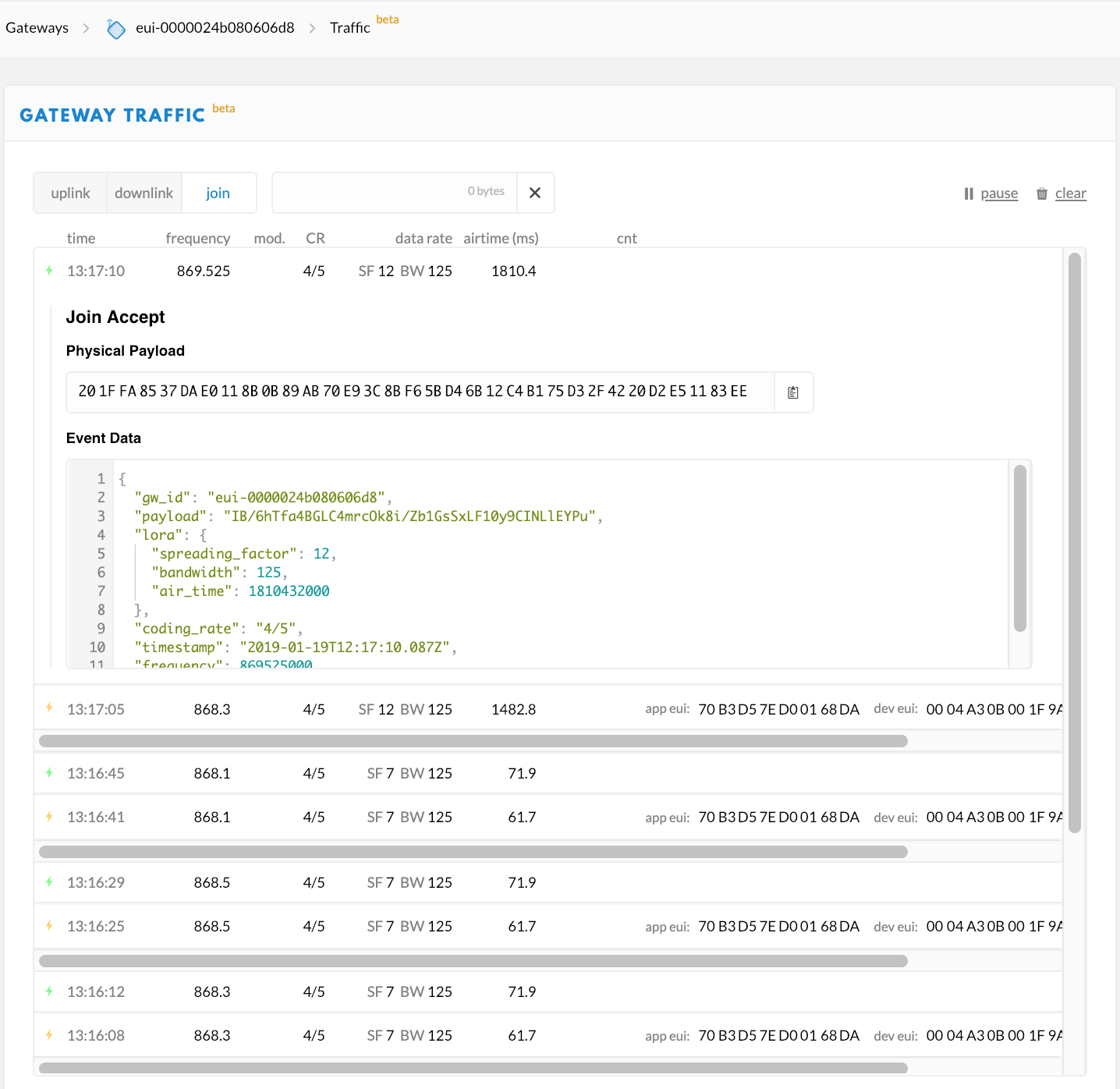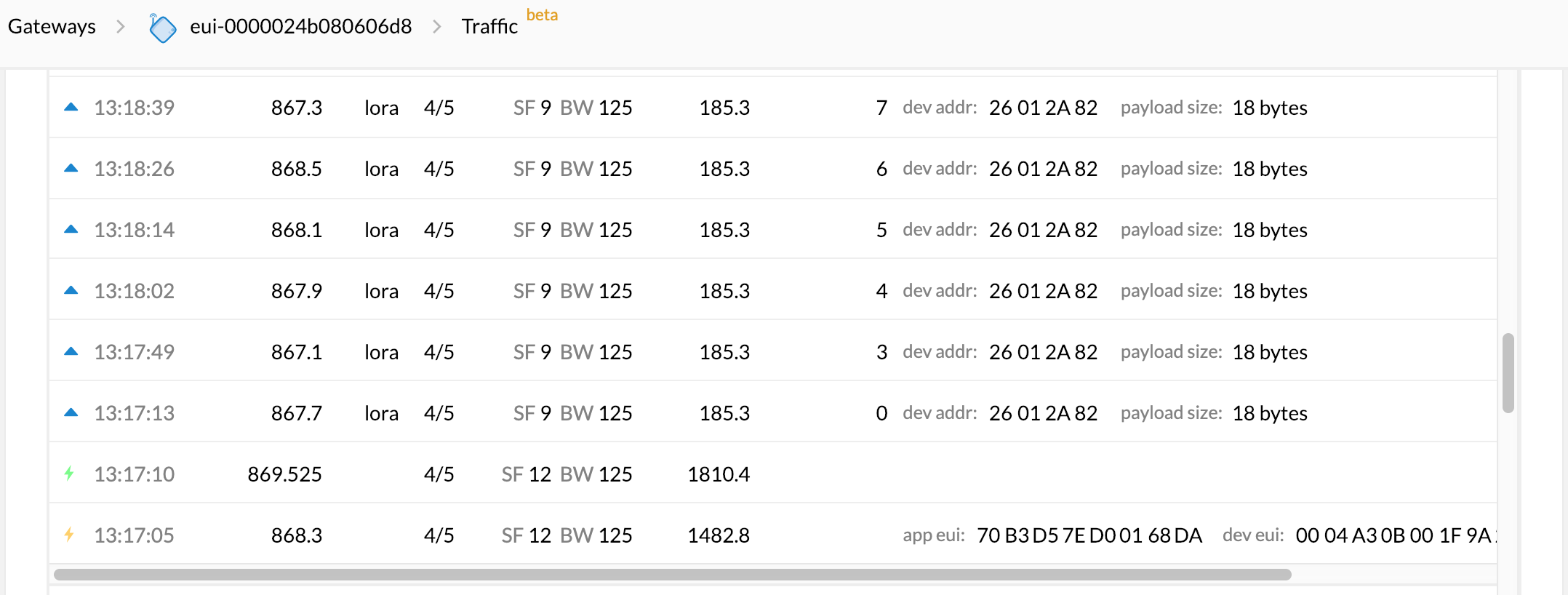It’s indeed SF7, but the specific Haarlem gateway just got an SF12 too. I’d assume you started with the TTN library’s version? Is the SF12 the Sodaq version?

…where only the SF12 version also shows uplinks, using SF9:

It’s indeed SF7, but the specific Haarlem gateway just got an SF12 too. I’d assume you started with the TTN library’s version? Is the SF12 the Sodaq version?

…where only the SF12 version also shows uplinks, using SF9:
